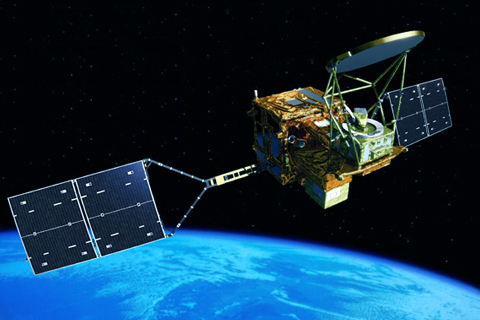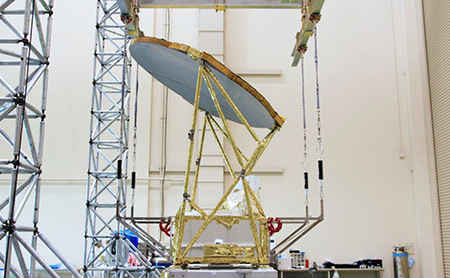About Global Change Observation Mission - Water
"SHIZUKU" (GCOM-W)
 |
Observing All Environmental Changes on Earth for Present and Future GenerationsThe "Global Change Observation Mission" (GCOM) aims to construct, use, and verify systems that enable continuous global-scale observations (for 10 to 15 years) of effective geophysical parameters for elucidating global climate change and water circulation mechanisms. The GCOM mission is a two series of satellites, GCOM-W for observing water circulation changes and GCOM-C for climate changes. The GCOM-W with a microwave radiometer onboard will observe precipitation, vapor amounts, wind velocity above the ocean, sea water temperature, water levels on land areas, and snow depths. Launch date: May 18, 2012 |
|---|
Project Topics
indexGSMaP receives "Dr. Roman L. Kintanar Award 2020" for significant contribution to Typhoon Committee's regional flood forecasting
|
The joint team of the International Centre for Water Hazard and Risk Management (ICHARM), the Infrastructure Development Institute (IDI) and JAXA was given the “Dr. Roman L. Kintanar Award for Typhoon-Related Disaster Mitigation - 2020”. The Dr. Roman L. Kintanar Award is given annually to an organization that has made a significant contribution to the activities of the Typhoon Committee, an inter-governmental body established under the United Nations Economic and Social Commission for A... |
Press Release
index-
- Apr. 18, 2025 (11:00) [release]
- Winter Arctic Sea Ice Extent Lowest Ever Recorded in Satellite observation Era (Japanese Only)
-
- Sep. 5, 2014 (14:00) [release]
- NOAA to utilize data acquired by "SHIZUKU"
Global Change Observation Mission - Water
"Characteristics of SHIZUKU" (GCOM-W)
World's Largest Revolving Space Antenna AMSR2
|
The Advanced Microwave Scanning Radiometer 2 (AMSR2,) which will be loaded onto the GCOM-W, is a sensor to observe radiometers, or microwaves emitted naturally from the ground, sea surface and atmosphere, using six different frequency bands ranging from 7 GHz to 89 GHz. The strength of a natural microwave is determined by its characteristics and moisture, including the surface condition and temperature of the material. Although it depends on the frequency, the microwave is very weak. AMSR2 will detect such weak microwaves at an altitude of 700 kilometers and measure the strength of them with a very high accuracy. For example, by measuring the strength of a microwave emitted from the sea surface with the AMSR2, we can understand the water temperature of the sea surface to an accuracy of 0.5 degrees Celsius. |
 |
|---|
The antenna of the AMSR2, which receives microwaves from the ground, arc scans the ground surface at a ratio of one turn every 1.5 seconds and observes an area approximately 1,450 kilometers wide in one scan. Using this scanning method, the AMSR2 can observe over 99 percent of the Earth's area in just 2 days. The diameter of the antenna is about 2 meters, making it the world's largest observation sensor aboard a satellite. The height of the rotating part is about 2.7 meters and the weight is about 250 kilograms. The AMSR2 can keep rotating such a large and heavy antenna at a speed of one turn per 1.5 seconds for 24 hours a day and more than five years without a minute of rest.
Major Characteristics
| International Designation Code | 2012-025A |
|---|---|
| Launch Date | May 18, 2012 |
| Launch Vehicle | H-IIA Launch Vehicle No. 21 |
| Location | Tanegashima Space Center |
| Shape | 2 box shape with wing-type solar array paddles
Approx. 4.9m×3.0m×5.1m (Depth) (Length between the tips of the paddles: 17.7 m) |
| Weight | 1900 kg |
| Orbiter | Sun-Synchronous Subrecurrent/ Recurrent |
| Altitude | 700km |
| Inclination | Approx. 98 degrees |
| Period | 13:30±15min |
Contents

- Aug. 6, 2008
- To Preserve Our Earth